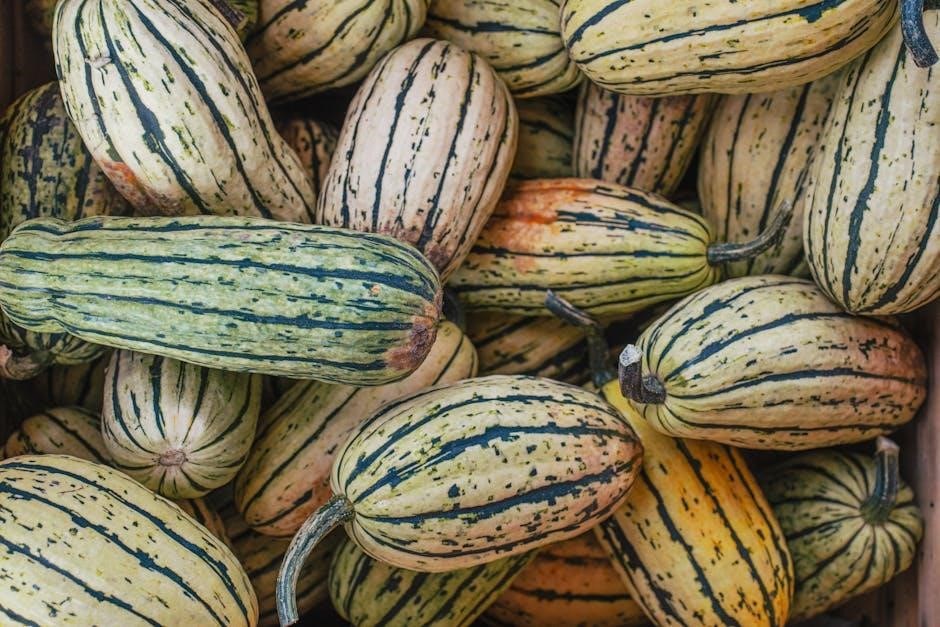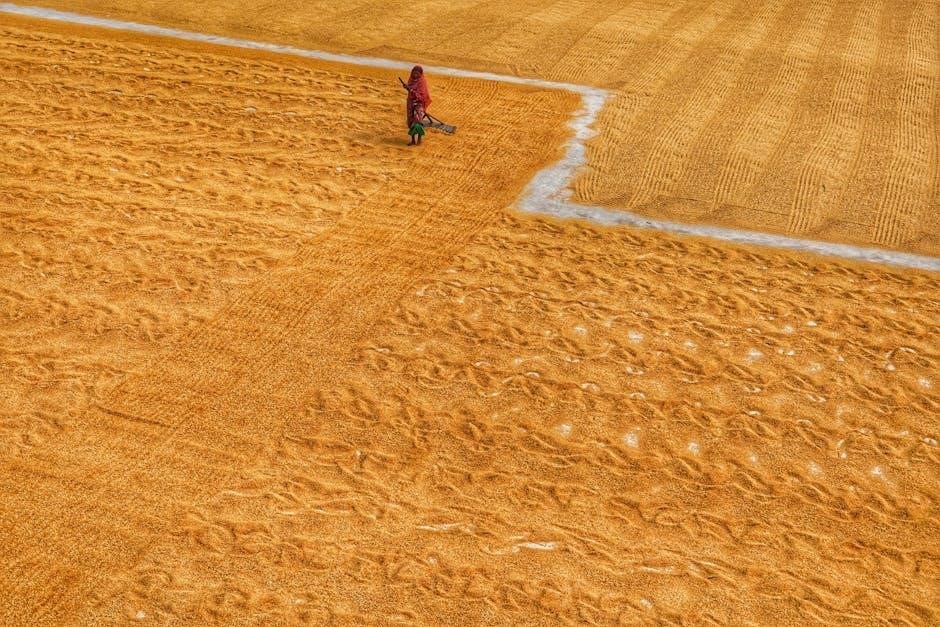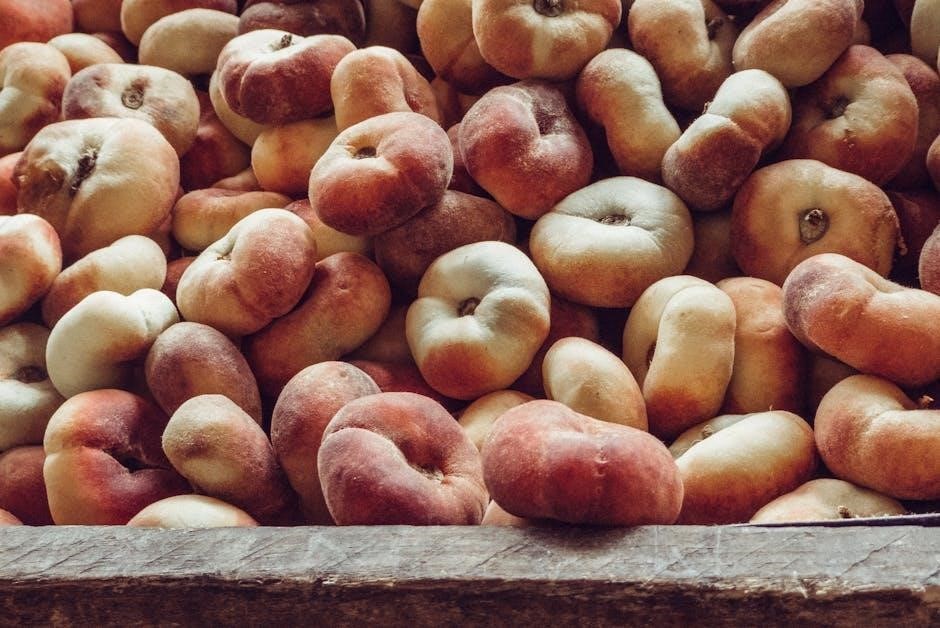The Local Binary Pattern (LBP) is a powerful texture descriptor used in image processing and computer vision; It efficiently captures local texture features by comparing neighboring pixels‚ making it highly effective for face recognition‚ object detection‚ and various classification tasks. Its simplicity and efficiency have made it a fundamental tool in pattern recognition.
Overview of LBP and Its Importance in Image Processing
Local Binary Patterns (LBP) is a non-parametric texture analysis method widely used in image processing. Its significance lies in its ability to efficiently capture local texture features by comparing neighboring pixels. LBP is robust‚ computationally simple‚ and invariant to monotonic grayscale changes‚ making it highly effective for various applications. It has become a cornerstone in tasks like face recognition‚ object detection‚ and medical image analysis due to its ability to describe texture patterns accurately. The method’s versatility and efficiency have made it a fundamental tool in computer vision and pattern recognition‚ enabling advanced image classification and feature extraction.
Historical Development and Applications of LBP
The Local Binary Pattern (LBP) was first introduced in the early 1990s by Ojala et al. as a method for texture analysis. Initially‚ it compared pixel neighborhoods to create binary codes‚ evolving into more advanced versions like LBP_U2 for uniform patterns. Its versatility led to applications in face recognition‚ medical imaging‚ and biometrics. LBP’s efficiency and robustness have made it a cornerstone in computer vision‚ enabling real-time systems and enhancing feature extraction. Its historical development highlights its adaptability‚ transforming it into a widely used tool across diverse domains‚ from industrial inspection to human-computer interaction.

Basic Principles of Local Binary Patterns
LBP analyzes image texture by comparing neighboring pixels‚ creating binary codes that describe local patterns. This non-parametric method efficiently captures small-scale texture features for various applications.
How LBP Works: Neighborhood Pixel Comparison
The core of LBP lies in neighborhood pixel comparison‚ where each pixel’s value is compared with its surrounding neighbors. Typically‚ a 3×3 grid is used‚ and each neighbor is assigned a binary value (0 or 1) based on whether its intensity is greater than the center pixel. This binary comparison generates a unique code for each pixel‚ describing the local texture pattern. The binary string is then converted into a decimal value‚ forming the LBP code. This process effectively captures small-scale texture information‚ making it robust for various image analysis tasks.
Binary Code Generation and Texture Description
LBP generates a binary code by comparing each pixel with its neighbors‚ creating a unique pattern that describes local texture. This binary string is converted into a decimal value‚ forming a texture descriptor. The method captures fine-scale texture details by analyzing pixel neighborhoods‚ making it robust for image analysis. Histograms of these codes summarize texture information‚ enabling effective feature extraction. LBP’s efficiency lies in its ability to encode spatial patterns concisely‚ making it widely applicable in face recognition‚ object detection‚ and image classification tasks. Its simplicity and effectiveness have solidified its role in computer vision applications.
Advanced Concepts in LBP
Advanced LBP techniques enhance texture analysis through rotation invariance‚ uniform patterns‚ and multi-scale extensions. These improvements expand LBP’s robustness‚ enabling better handling of complex textures and varied lighting conditions‚ while maintaining computational efficiency for real-world applications.
Uniform LBP and Its Role in Reducing Dimensionality
Uniform LBP is an extension of the standard LBP method‚ focusing on patterns with minimal transitions between 0s and 1s. By categorizing these uniform patterns‚ the dimensionality of the feature space is significantly reduced. This enhancement improves computational efficiency while retaining discriminative power. Uniform LBP is particularly effective in texture classification and face recognition tasks‚ where reducing the feature space leads to faster processing without compromising accuracy.
Rotation Invariant LBP for Robust Feature Extraction
Rotation Invariant LBP extends the standard LBP method by incorporating rotational robustness‚ ensuring that features remain consistent across different orientations. This is achieved by considering all possible rotations of a local pattern and selecting the smallest label. The rotation-invariant property enhances the descriptor’s ability to capture texture information accurately‚ even when images are rotated. This makes it particularly effective in applications where objects may appear in varying orientations‚ such as facial analysis or texture classification‚ improving overall system performance and robustness.

Applications of LBP in Face Recognition
Local Binary Patterns (LBP) are widely used in face recognition for feature extraction and face localization. LBP’s robustness to lighting and pose variations enhances recognition accuracy‚ making it a key tool in real-time face recognition systems.
LBP for Face Localization and Feature Extraction
Local Binary Patterns (LBP) are extensively utilized for face localization and feature extraction due to their ability to capture micro-texture details. By comparing neighboring pixels‚ LBP generates binary codes that describe facial features‚ enabling accurate face detection and alignment. This method is robust to variations in lighting and pose‚ making it highly effective for real-time face recognition systems. LBP’s efficiency in extracting discriminative features enhances the performance of face recognition tasks‚ solidifying its role as a cornerstone in facial analysis applications.
Combining LBP with Other Techniques for Enhanced Accuracy
Combining Local Binary Patterns (LBP) with other techniques significantly enhances accuracy in image processing tasks. Integration with Principal Component Analysis (PCA) optimizes feature extraction‚ while fusion with Gabor filters improves texture representation. Hybrid approaches‚ such as LBP with Convolutional Neural Networks (CNNs)‚ leverage deep learning’s power for robust feature learning. These combinations address LBP’s limitations‚ such as sensitivity to noise‚ by incorporating global context and reducing dimensionality. Such integrations are widely used in face recognition‚ object detection‚ and classification‚ demonstrating LBP’s versatility and potential when merged with complementary methods.

LBP in Texture Analysis and Classification
Local Binary Patterns (LBP) is a powerful tool for texture analysis‚ capturing local texture features by comparing neighboring pixels. Widely used in image and video processing‚ it excels in classification tasks due to its ability to describe texture effectively. Its simplicity and efficiency make it a popular choice in computer vision applications.
LBP as a Texture Descriptor for Image Classification
Local Binary Patterns (LBP) is a widely used texture descriptor that excels in image classification tasks. By comparing neighboring pixels‚ LBP generates a binary code that effectively captures texture information. Its simplicity and computational efficiency make it a popular choice for various applications. LBP is robust to monotonic grayscale transformations‚ ensuring consistent performance across different lighting conditions. Combined with techniques like PCA and machine learning algorithms‚ LBP enhances classification accuracy. Its ability to describe local texture patterns has made it a cornerstone in computer vision‚ particularly for tasks like object recognition and scene analysis.
Integration of LBP with Machine Learning Algorithms
Local Binary Patterns (LBP) seamlessly integrate with machine learning algorithms to enhance image classification and recognition tasks. By combining LBP-derived texture features with techniques like PCA and k-nearest neighbors‚ researchers achieve improved accuracy. The method’s efficiency in feature extraction makes it a valuable preprocessing step for various classifiers.
LBP’s robust texture description complements machine learning models‚ enabling better pattern recognition in applications such as face recognition and object detection. This integration highlights LBP’s versatility in advancing computer vision solutions.

Feature Extraction and Dimensionality Reduction
Local Binary Patterns (LBP) are widely used for efficient feature extraction‚ reducing high-dimensional data complexity. Techniques like PCA further enhance dimensionality reduction‚ improving processing efficiency while retaining critical information.
Efficient Feature Extraction Using LBP
Local Binary Patterns (LBP) provide a computationally efficient method for feature extraction by analyzing the local texture of images. The technique operates by comparing each pixel with its neighbors‚ generating a binary code that describes the local structure. This non-parametric approach ensures robustness to monotonic gray-scale transformations‚ making it ideal for various applications. LBP’s simplicity and speed enable real-time processing‚ while its ability to capture small-scale texture details enhances accuracy in tasks like face recognition and object detection. By transforming images into arrays of labels‚ LBP effectively reduces complexity‚ making it a versatile tool in computer vision.
Reducing Feature Space for Improved Performance
Local Binary Patterns (LBP) often generate high-dimensional feature spaces‚ which can hinder performance in image processing tasks. To address this‚ techniques like uniform LBP are employed‚ reducing the number of patterns by focusing on those with minimal transitions. Additionally‚ integrating LBP with dimensionality reduction methods‚ such as Principal Component Analysis (PCA)‚ further optimizes feature representation. This balance between retaining meaningful texture information and minimizing computational complexity enhances classification accuracy and processing speed‚ making LBP-based systems more efficient and scalable for real-world applications.

Challenges and Limitations of LBP
LBP faces challenges like high-dimensional feature spaces and sensitivity to noise. Its reliance on pixel neighborhoods can limit its ability to capture global texture patterns effectively.
SENSITIVITY TO NOISE AND ILLUMINATION CHANGES
LBP’s sensitivity to noise and illumination changes is a significant limitation. Variations in lighting conditions can alter pixel intensities‚ affecting LBP codes. Noise in images can cause inconsistent binary patterns‚ reducing accuracy. While uniform LBP helps reduce dimensionality‚ it doesn’t fully address these issues. Techniques like Gaussian smoothing or combining LBP with robust feature extraction methods can mitigate these challenges. Addressing these limitations is crucial for improving LBP’s reliability in real-world applications with varying environmental conditions.
BALANCING LOCAL AND GLOBAL TEXTURE INFORMATION
Balancing local and global texture information remains a challenge in LBP-based methods. LBP excels at capturing fine‚ local texture details but may overlook broader‚ global patterns. This limitation can lead to incomplete feature representation‚ affecting performance in complex scenes. Techniques like multi-scale LBP or combining LBP with global descriptors have been proposed to address this issue. These approaches aim to integrate both local and global texture information‚ enhancing robustness and accuracy in various applications. Striking the right balance is crucial for achieving optimal results in image analysis and pattern recognition tasks.

Emerging Trends and Future Directions
Emerging trends include integrating LBP with deep learning techniques like CNNs for enhanced feature extraction and real-time applications in computer vision‚ improving performance and versatility.
Combining LBP with Deep Learning Techniques
Combining Local Binary Patterns (LBP) with deep learning techniques‚ such as Convolutional Neural Networks (CNNs) and Recurrent Neural Networks (RNNs)‚ has emerged as a promising approach. This integration leverages the strengths of both methods: LBP’s efficiency in texture analysis and deep learning’s ability to learn complex patterns. Such hybrid models enhance feature extraction‚ improve classification accuracy‚ and enable real-time applications. This synergy is particularly beneficial in tasks like image classification‚ facial recognition‚ and object detection‚ offering improved robustness and adaptability in computer vision systems.
Real-Time Applications of LBP in Computer Vision
Local Binary Patterns (LBP) are widely applied in real-time computer vision tasks due to their computational efficiency and robustness. Applications include facial recognition systems‚ video surveillance‚ and object detection. LBP’s ability to process images quickly makes it ideal for live systems‚ such as traffic monitoring and human-computer interaction. Its lightweight computation enables deployment on embedded devices‚ fostering practical uses in industries like healthcare and security. By combining LBP with modern vision techniques‚ real-time systems achieve enhanced performance‚ making it a vital tool for dynamic and time-sensitive applications in computer vision.
